#San Francisco Music Box Company
Explore tagged Tumblr posts
Text

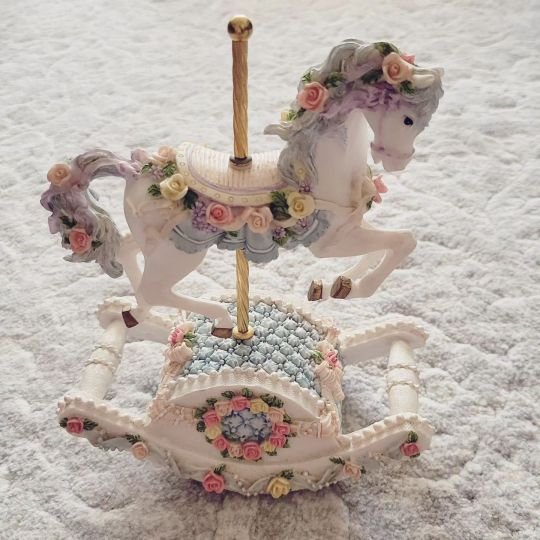
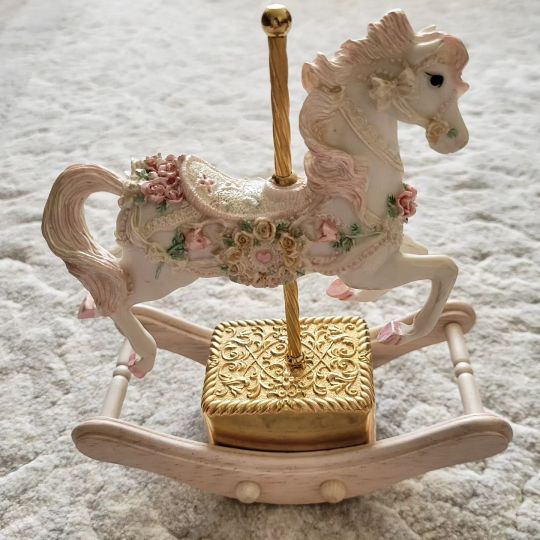
At the thrift store where I usually find my lustreware china they had a whole collection of San Francisco Music Box company carousel horses. I picked out my 3 favorites to bring home ♡
190 notes
·
View notes
Text
Guess what came in the mail...

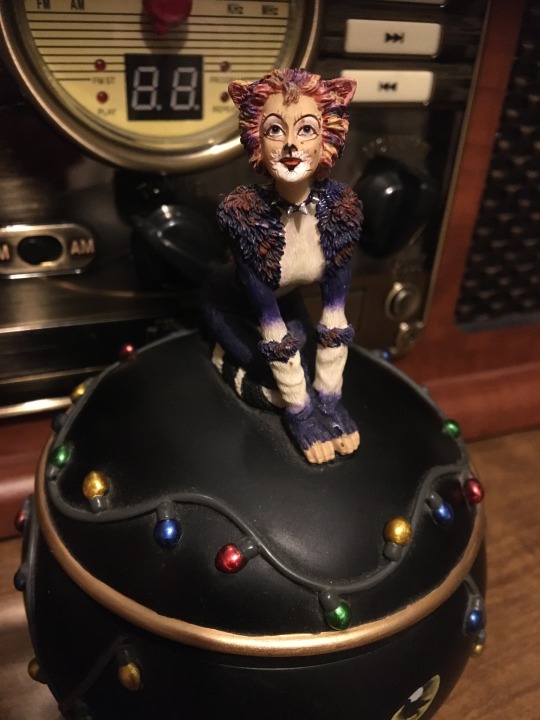



It actually came a couple days ago but I just got to posting it now. She's a little dusy and rough around the edges but I love her!
#cats musical#cats the musical#cats 1998#jellicle cats#jemima cats#sillabub cats#munkustrap#cats musical collectibles#san francisco music box company
134 notes
·
View notes
Text

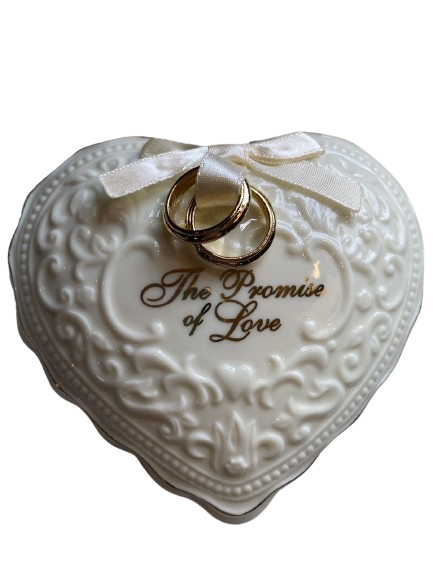
San Francisco Music Box Company, “Promise Of Love” Music Box
#promise of love#engagement#music box#wind-up music box#wedding#vintage#the San Francisco music box company#ebay#pngs#lovecore#romance#editing#transparent#png#mine#transparent png#cute#rings#white#gold#romantic#nightmareseditingpngs
1K notes
·
View notes
Text
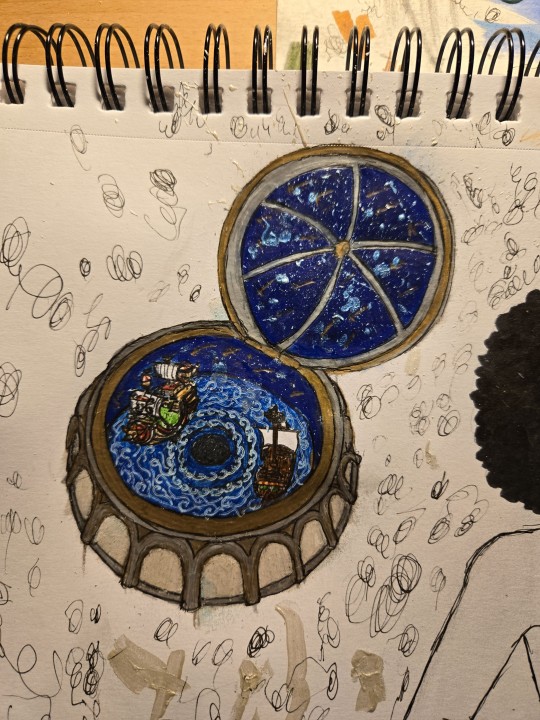

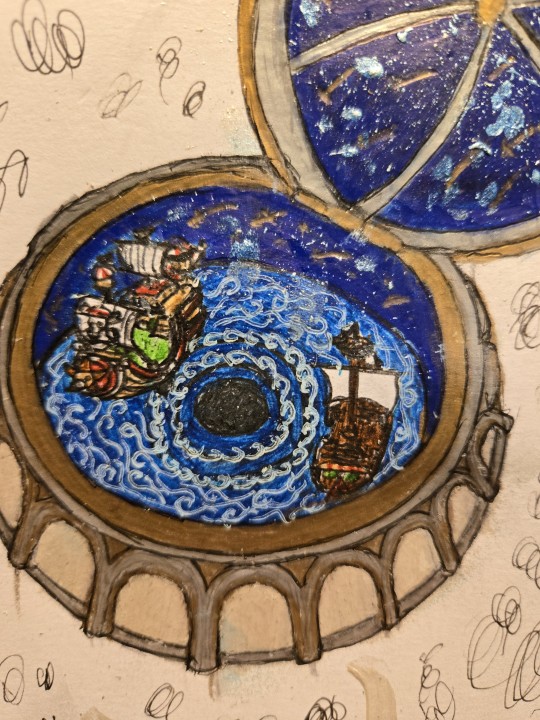

I had a dream about a music box that played "binks no sake" or "we are" and had the merry and sunny sailing around each other up and down in a meteor shower and i had such a visceral need to own this object that i started sketching designs.
The music box had metal filigree and was made of wood with inlaid mother of pearl shell for the panels. I'm thinking of adding the silhohettes of the straw hat crew to the panels on the side. The filigree is gold and silver, the base material wood. The models of the ship are tiny and either porcelain or metal but they rock back and forth and move up and down as they sail around each other. The waves also move when the box is wound.
As for the coloration I'm thinking it was enamel in my dream? Think the San Francisco Music Box Company style. It' was very intricate in my dream and made of really expensive materials-- not like cheap plastic.
I will pay money for this IRL i desperately want this to be a real thing that i can own. I was so angry when i woke up and this was not on my knick knack shelf.
More art to come probably.
#one piece#music box#the thousand sunny#the merry go#monkey d luffy#wood craft#metal#traditional drawing
13 notes
·
View notes
Video
“I Want My MTV!” 1984-1985, featuring Cindy Lauper, Billy Idol, David Bowie, Boy George & Culture Club, Hall & Oates, Joe Elliot/Def Lepard, The Police, Madonna, John Mellencamp, Ric Ocasek/The Cars.
I Want My MTV! 1984-1985
Interview with animation director Candy Kugel
Director/animator Candy Kugel played a critical role in the original look of MTV: Music Television. She illustrated and directed the animation for the “Top of the Hour” (colloquially known as the “MTV moonman” piece), and many others too.* Collaborating with producer Buzz Potamkin, Vincent Cafarelli and Marilyn Kraemer at Buzzco/New York, it was a special creative relationship.
Alan Goodman and I had started Fred/Alan in April 1983, after we’d overseen the original “I Want My MTV!” campaign Dale Pon and George Lois (agency: LPG/Pon) the year before. Wouldn’t you know that after we left, MTV was doing so well that the next year, they could afford much nicer spots?
Candy went on to supervise and direct the animation of the ‘84-’85 “I Want My MTV!” for Buzzco. The spots had a much higher production value –live action shots around the world, with hand painting and rotoscoped animation overlays– were beautiful. Because of MTV’s early successes, the company was able to fund a much larger media buy in many more markets across America.
In June 2020, I talked with Candy about the production of the campaign.
Candy Kugel: The concept of using animation over live-action developed from an earlier project we did for a radio station in San Francisco. We had experimented with a Xerox process that allowed us to print film frames onto paper, and then we manipulated them by hand. When it came time to figure out how to integrate rock stars into the MTV campaign, we thought this technique would allow us to work over the live-action footage in a way that made it unique and exciting.
Fred Seibert: How did you get involved in developing this animation style?
Candy Kugel: Kodak had just released a type of paper that made photo rotoscoping possible without needing negatives. It was a direct printing technique that seemed perfect for what we wanted to do. [MTV President] Tom Freston, [account executive] Leslie Fenn, and I discussed what the final look would be. I didn't have a concrete vision at the time, but I confidently told them, "It’ll look like nothing you've ever seen before."
Fred Seibert: What was the process of shooting the footage and developing the animation?
Candy Kugel: We shot Hall & Oates first at Silvercup Studios in New York. Daryl Hall was standing with his legs apart, and John Oates was on an apple box to match his height. It was funny, but it worked. We chose a take, sent it to the lab for rotoscoping, and then it was entirely up to me to animate over it. I had free rein creatively, which was exciting.
Fred Seibert: How were some of the other artists handled?
Candy Kugel: Cindy Lauper was a standout. She was shot in New York and had this great energy. She asked me how her line looked in her costume, and I assured her I’d fix any issues in the drawings. The take where she was surprised by the last champagne bottle popping was genuine, so we used that. Def Leppard also filmed in New York, and Joe Elliott came up with the punching bag idea himself.
Fred Seibert: What about Billy Idol?
Candy Kugel: He was shot in New York as well. I didn’t know his music beforehand, but the moment he walked into the room, he took my breath away. He had incredible charisma—completely commanding the space. More than a musician, he had a presence like an actor.
Fred Seibert: And Culture Club?
Candy Kugel: That was shot in Europe. I didn’t know their music much beforehand either. I was given footage and had to create something from it. I had a lot to work with, so I just started experimenting.
Fred Seibert: The Police were part of this as well, right?
Candy Kugel: Yes, but that was a difficult shoot. Dale returned from filming them with really bad footage. Sting was reportedly difficult, and the material was nearly unusable. It was frustrating, but we worked with what we had.
Fred Seibert: How did the final edits come together?
Candy Kugel: The inserts and final compilation were done at PrinzCo Rack with editor Michael Biondi. Dale was always particular about what color should be behind people, even though everything started in black and white and we added color later.
Fred Seibert: Looking back, what stands out to you most about the project?
Candy Kugel: It was such a creative and experimental time. We were pushing boundaries with a style no one had seen before, blending live-action with bold, expressive animation. It gave MTV its iconic, rebellious visual identity. Dale, for all his quirks, had a vision and trusted us to execute it. The campaign became legendary because it captured the spirit of MTV’s early years—bold, unexpected, and unapologetically fresh.
Fred Seibert: Thank you for sharing these insights. It was an incredible project.
Candy Kugel: My pleasure.
* Not to mention the work Candy did for my partner, Alan Goodman, and me later on at The Playboy Channel, Nickelodeon and Lifetime.
#Candy Kugel#Buzzco#Buzz Potamkin#Dale Pon#IWMM#advertising#MTV advertising#1984#1985#commercials#MTV#animation
5 notes
·
View notes
Text
Recently, the curtain dropped on hiding infamous “order,” “service,” and “convenience” fees. A new state law requires all businesses -- especially ticket sellers -- to now disclose your full price (minus tax) up front. No. More. Hidden. Fees.
“There’s no reason for hidden fees, other than to lure in potential customers with prices that simply are not true,” said California Attorney General Rob Bonta.
The new law kicked in July first. So, are ticket sellers still hiding fees?
NBC Bay Area just spot-checked more than 25 San Francisco Bay Area venues. We followed the normal public process of purchasing tickets for recent events, knowing the new state law says there should be no price surprises.
So, what did we find?
Many popular ticket sellers like the Giants, Shoreline Amphitheatre, SAP Center, the San Francisco Symphony, and Concord Pavilion were disclosing all fees up front.
But several others were… not.
For example: Stanford’s popular Frost Amphitheater advertised $40 for a lawn seat to enjoy a summer quintet. But at checkout, a $12 “online processing” fee suddenly appeared. Our $40 seat became $52.
The California Attorney General’s office told us that this kind of price advertising is not compliant with the new state law.
We saw similar fees still tacked onto the end of ticket purchases at places like: Symphony San Jose, California Theater in San Jose, San Francisco's The Midway venue, the Oakland Ballers, and Lyric Theatre in San Jose.
At checkout, Lyric's website was tacking on a $2 fee for its summer festival, which includes Fiddler on the Roof, a Cole Porter concert, and the comedic musical Red Mill. So, we contacted Lyric.
“I was completely unaware of it until you brought it up to me,” said box office manager Chris Frye. “We strive to be compliant and straightforward. And be sure everybody knows what they’re getting… and what they’re paying.”
Frye says he immediately looked into the law.
“Originally, I thought I had to change our whole pricing structure," he said. "But no, I can just change the wording and make it transparent and make sure how much they are going to pay from beginning to end.”
And he did. The company now discloses the $2 fee, up front. Frye even made a special sign for the first Fiddler performance.
“We are now, thankfully, compliant,” Frye said.
What about the other places we mentioned? We contacted them all and showed them the hidden fees we found.
Stanford Live just updated its ticketing – so you see your full ticket price up front.
The Oakland Ballers also just updated their website.
San Francisco’s Midway venue did not respond to us, but its website did change.
California Theater in San Jose said: “We are in communication with our clients to make sure that they are aware of the law change and that they address all compliance needs in their ticketing.”
Symphony San Jose said: “We are actively working with our ticketing platform to ensure the fees are displayed correctly in compliance with the law.”
If venues and promoters don’t start disclosing fees up front, don’t expect a big law enforcement crackdown. The law wasn’t written for that kind of accountability. Instead, it’s up to you. The new law gives ticket buyers who find hidden fees a green light to sue the ticket seller for at least $1,000, plus legal fees.
The law’s author, State Senator Bill Dodd, told NBC Bay Area he expects that kind of cash penalty will motivate ticket sellers to follow the law.
6 notes
·
View notes
Text







In honour of the 25th anniversary of the release of CATS (1998) in the UK today, we all need some Jemima in our lives.
The figurine was made by the San Francisco Music Box Company shortly after the release of the film, and features a music box inside the base that plays Memory (the standard for all CATS music boxes made by the company).
The figurine is made in the likeness of Veerle Casteleyn who played Jemima in the film (and also in a few other productions before and after), with all the finer details hand painted, including the base.
These music boxes are all so much fun!
28 notes
·
View notes
Text
LÉGENDES DU JAZZ
JOHN HANDY, UN MULTI-INSTRUMENTISTE MÉCONNU
“John just sounded so good. He’ll give you that old-school authentic thing, and when he plays a ballad, it’s hard to replicate if you don’t come from that era. But he’s also very modern and can be abstract in his thinking. A lot of his music is very free and open and forward-thinking.”
- Joe Warner
Né le 3 février 1933 à Dallas, au Texas, John Richard Handy III a d’abord fréquenté la St. Peter’s Academy de Dallas avant de déménager à Oakland avec sa famille à l’âge de quinze ans. À Oakland, Handy avait étudié au McClymonds High School. À l’époque, Handy avait déjà appris à jouer de la clarinette. Amateur de boxe, Handy était aussi champion poids plume, même s’il était aveugle d’une oeil et avait disloqué un de ses pouces dans un combat.
Également passionné de jazz, Handy avait l’habitude de s’endormir sur la musique de Charlie Parker pour étouffer le bruit des soirées que son beau-père organisait pour faire la promotion de son commerce illégal d’alcool. Parmi les camarades de classes de Handy à l’époque, on remarquait des membres de la famille Escovedo ainsi que le violoniste Michael White. Dans le cadre de ses études, Handy avait également fait la rencontre du futur athlète étoile Bill Russell, qui l’avait convié à participer à un tournoi de basketball. “I won the first game — of 15’’, avait expliqué plus tard Handy en riant.
Après avoir découvert que l’école possédait un excellent groupe musical, Handy s’était procuré une anche et une embouchure et avait appris à jouer du saxophone alto. De fait, Handy était tellement talentueux qu’il avait participé à sa première performance une semaine plus tard. Il précisait: “That was $5, and that became my way of making money.’’ Il avait ajouté: “Most of my gigs were in the East Bay. I was 17 before I went to San Francisco and discovered Bop City.”
À l’époque, Handy ne savait pas lire la musique et avait appris à jouer du saxophone alto en autodidacte à partir de 1949. Il poursuivait: “I taught myself how to read music, and if I heard something on the radio, I could play it,When Louis Jordan was popular, I learned some of his solos.”
DÉBUTS DE CARRIÈRE
Particulièrement influencé par le haut registre du saxophoniste Earl Bostic, Handy était encore adolescent lorsqu’il avait participé à une jam session à Bop City avec des membres de l’orchestre de Duke Ellington et du groupe de Gerald Wilson. Il avait aussi joué avec les saxophonistes Teddy Edwards et Frank Morgan. Après s’être inscrit au San Francisco State College, Handy avait fait ses débuts sur disque en 1953 avec le guitariste Lowell Fulson. Mobilisé et envoyé en Corée où la guerre venait tout juste de se terminer, Handy avait passé deux ans dans l’armée. Sa dernière affectation était au Presidio de San Francisco.
Après s’être marié, Handy avait eu un fils, John Handy IV, qui était devenu batteur. Après sa démobilisation, Handy était retourné au San Francisco State College. Même si le jazz ne faisait pas encore partie du programme du département de musique, Handy avait fait partie de groupes aux côtés d’autres passionnés de jazz. Comme l’avait expliqué Handy plus tard, à l’extérieur du campus, “some of the best people in jazz would come to Bop City. But by the mid-’50s, they were letting people in that would ruin it, because they didn’t know crap about music and didn’t care to know.” Handy avait même décliné une invitation de Charles Mingus pour venir jouer avec son groupe en 1958, car le contrebassiste avait une très mauvaise réputation auprès des musiciens qui, selon ses dires, ‘’complained a lot about Charles, but not in his company. They said he was a real asshole.”
Handy se produisait au Five Spot en 1958 avec le saxophoniste Frank Foster et le trompettiste Thad Jones, deux vedettes de l’orchestre de Count Basie, lorsqu’il avait été remarqué par Mingus. Le contrebassiste avait été tellement impressionné par le solo d’Handy sur le standard “There Will Never Be Another You” qu’il était sorti du club en criant “Bird’s back! Bird’s back!” (Charlie Parker était mort trois ans auparavant). Après s’être calmé, Mingus, qui devait se produire au club quelques semaines plus tard, avait fait venir Handy au bar pour lui faire une offre.
En dépit de l’obstruction d’un de ses professeurs particulièrement antipathique, Handy avait finalement décroché son diplôme en 1958 à l’âge de trente ans. Il expliquait: “I had ‘incompletes’ on my transcript that I had already completed and they never gave me the grade. This particular guy said in essence ‘You’re too raw.’ I took every took every course they had to get a B.A. and I finally graduated at 30.”
Après s’être installé à New York, Handy s’était joint au groupe de Mingus. Même s’il n’avait pas fait partie du groupe que durant un an, le séjour de Handy avait contribué à changer l’évolution du jazz, notamment dans le cadre des albums Mingus Ah Um et Mingus Dynasty, dans lesquels il avait participé à l’enregistrement des classiques “Better Git It in Your Soul’’, Goodbye Pork Pie Hat’’ (un éloge au saxophoniste Lester Young qui venait de mourir) et “Fables of Faubus’’, une dénonciation du gouverneur ségrégationniste de l’Arkansas, Orval Faubus. Tout aussi marquant avait été l’album Blues and Roots, dans lequel Handy avait fait équipe avec Jackie McLean au saxophone alto. Même si ces albums avaient été reconnus comme des classiques dès leur parution, Handy avait particulièrement excellé sur l’album Jazz Portraits: Mingus in Wonderland, un enregistrement en concert mettant en vedette le pianiste de San Francisco, Richard Wyands. Après avoir livré une performance au Five Spot, le quintet de Mingus s’était déplacé plus loin sur la même rue pour se produire à la Nonagon Art Gallery où il avait enregistré quatre pièces d’une durée totale de quarante-cinq minutes avec le saxophoniste ténor Booker Ervin (le seul autre musicien à avoir participé à tous les albums de Handy avec Mingus). Après le concert, le groupe était retourné au Five Spot pour prendre la relève de Sonny Rollins, qui avait fait les frais de l’intermission pendant son absence.
Après avoir enregistré quatre albums en un an avec Mingus, Handy était retourné à San Francisco où il avait fait ses débuts au début des années 1950 au Jimbo’s Bop City et partagé la scène avec de grands noms du jazz comme les saxophonistes Teddy Edwards, Frank Foster et Dexter Gordon. Handy avait aussi commencé à flirter avec le jazz modal, à une époque où très peu de ses pairs commençaient à peine à assimiler ce concept. En 1965, Handy avait présenté les résultats de cette expérimentation dans le cadre d’un concert présenté au Festival de jazz de Monterey, en Californie. L’enregistrement du concert, qui avait été publié par les disques Columbia l’année suivante sous le titre Live at the Monterey Jazz Festival, avait mérité à Handy deux nominations au gala des prix Grammy pour les pièces "Spanish Lady" (dans la catégorie de la meilleure performance de jazz) et pour sa composition "If Only We Knew". Le quintet de Handy était composé à l’époque du violoniste Michael White, du guitariste Jerry Hahn, et d’une section rythmique entièrement canadienne formée du contrebassiste Don Thompson et du batteur Terry Clarke.
Avec l’aide de sa femme, qui était également sa gérante, Handy avait aussi enregistré un premier disque comme leader en 1959. À l’époque, le vibraphoniste Milt Jackson s’était lié d’amitié avec Handy et sa femme et leur avait proposé d’habituer dans un de ses appartements situé près de Harlem. Décrivant ses débuts à cette époque, Handy avait commenté: “Most of my gigs were with Charles, but I played the whole summer of ’59 with Randy Weston at the Five Spot. Though Charles and Randy were both mavericks, Randy was more positive.” Handy avait ajouté: “We played with Randy six nights a week. That’s where my exposure came.’’
Handy se produisait au le pianiste Five Spot avec Randy Weston lorsqu’il avait rencontré la baronne Pannonica de Koenigswarter, une mécène qui avait été la protectrice de Charlie Parker et Thelonious Monk. Handy expliquait:
‘’One of the characters who came in to the Five Spot was the Baroness [Kathleen Annie Pannonica de Koenigswarter]; she came in with Thelonious Monk almost every night. She said, ‘Monk would like to speak to you’ as I’m coming off the bandstand, so I follow him into to kitchen, and Monk was a big man, his hat is almost touching the roof, and he kept walking, never turned around. He kind of looks up, not at me, and says, ‘You play your motherfucking ass off. You think,’ or maybe, ‘You play your motherfucking ass off, you think.’ I’m not sure which one he meant. And then he walked around me and out. I’m still scratching my head.”
Impressionné par le talent d’Handy, Monk lui avait plus tard proposé de faire sa première partie à la Jazz Gallery.
Handy avait également fait une tournée européenne avec son groupe en 1961. Par la suite, il avait travaillé comme soliste en Suède et au Danemark.
Retourné à San Francisco, Handy avait été très impliqué dans le mouvement des droits civiques. Il avait précisé: ‘’I couldn’t sit back, with all I’d gone through, and let somebody fight for me without trying to help my own cause.” À l’époque, des Afro-Américains comme le joueur de baseball Willie Mays des Giants de San Francisco faisaient l’objet d’une discrimination incessante, et Handy avait été arrêté durant une manifestation. Handy expliquait: ‘’I couldn’t sit back, with all I’d gone through, and let somebody fight for me without trying to help my own cause.” Afin de recueillir des fonds pour la cause, Handy avait formé le Freedom Band avec deux jeunes saxophonistes ténor, Mel Martin et Noel Jewkes. Le trompettiste Eddie Henderson faisait également partie du groupe.
À l’époque, Handy se produisait au Both/And Club sur la rue Divisadero. C’est dans ce club qu’Handy avait entendu pour la première fois la chanteuse Faye Carol. La chanteuse avait rencontré Handy au début des années 1970 alors qu’elle était mariée au professeur de musique Jim Gamble.
Même si le climat social était plutôt tendu à l’époque, Handy ne se rappelle pas que des incidents raciaux se soient produits dans les clubs de San Francisco ou dans le cadre de ses relations avec l’Union des Musiciens. “You don’t see that in jazz’’, avait expliqué Handy. Après avoir divorcé de sa première femme, Handy s’était marié avec une femme qu’il avait rencontrée au Five Spot et qui était devenue plus tard chancelier du San Francisco City College. Le couple s’était éventuellement acheté une maison sur la rue Baker.
En 1963, Handy a travaillé comme soliste sur la Côte Ouest avec des orchestres de musique classique comme le Santa Clara Symphony Orchestra et le San Francisco State College Band. L’année suivante, il avait retrouvé Mingus dans le cadre du Festival de Jazz de Monterey, en Californie. En 1966 et 1967, Handy avait fait une tournée aux États-Unis avec les Monterey All Stars. Il avait également participé à l’opéra The Visitation de Günther Schuller. En 1968, Handy a fondé un nouveau quartet avec Mike Nock, Michael White et Ron McClure.
Par l’entremise d’anciens camarades de classe du San Francisco College State, Handy avait été présenté au virtuose de la cithare Ravi Shankar, qui lui avait donné deux leçons privées sur la musique indienne. Comme Handy l’avait expliqué plus tard, “And I understood, because when I went to St. Peter’s, we sang Gregorian modal music. And African Americans are very modal. Later, I recorded with Ravi in India.’’
À la fin des années 1960, Handy avait également collaboré avec Ali Akbar Khan, un pionnier de la sarod, un instrument à cordes d’origine indienne. Andy poursuivait: “Then I got a call to play with [sarodist] Ali Akbar Khan. I went to his house in Marin County, and it was like I’d been playing with him all my life. I booked several concerts with him and paid him half of the ticket sales, though I realized that Indian musicians don’t do what we do. They don’t change keys and can’t play jazz.” Handy avait enregistré deux albums avec Khan. Zakir Hussain, avec qui il avait joué sur l’album Karuna Supreme en 1975, lui avait également fait cadeau d’un tabla.
La collaboration d’Handy avec Khan avait éventuellement donné lieu à l’enregistrement de l’album Karuna Supreme en 1975. À l’époque, Handy tentait de réaliser une symbiose entre la musique du Nord de l’Inde et les airs de Gospel qui avaient marqués son enfance avec sa grand-mère. Il expliquait: “I could relate it to the stuff I’d been exposed to in the African American church. At the first rehearsal with Ali Akbar Khan he said ‘Let’s just play,’ and I just understood it. I had met Ravi Shankar. He invited me to a concert in LA and gave me a couple of lessons. I did learn something from it, but I could always play it with my background in the blues.” Handy avait aussi travaillé en 1980 avec Lakshminarayana Subramaniam dans le cadre du groupe Rainbow.
Retourné au San Francisco State College (devenu l’Université de San Francisco State) en 1968, Handy avait repris sa carrière de professeur et avait pris la direction des études de jazz. Conscient d’être l’objet d’une certaine jalousie de la part des professeurs de musique classique, Handy avait commenté: “I know they were jealous of me because I could do what they did but they couldn’t do what I did.”
Comme mentor, Handy avait encouragé la carrière de plusieurs générations de jeunes musiciens. Lorsque le saxophoniste Hafez Modirzadeh était venu enseigner à San Francisco State, Handy l’avait pris sous son aile et l’avait initié à la musique non-occidentale. Ne tarissant pas d’éloges sur les compositions et les arrangements innovateurs d’Handy, Modirzadeh avait ajouté:
“It’s something that really connects him to jazz history, to Buddy Bolden and Louis Armstrong. You had to be there to see these people play. There won’t be a technical book by John Handy describing how he does what he does, that fingering and embouchure. It’s mystical, completely John Handy’s, and we’ll never know how he did it.I’ve asked him once or twice, ‘Can I come over and you show me how to do something?’ Very graciously, he’ll say, ‘I’m still working out some things that Charlie Parker did.’”
À l’époque, Handy avait aussi reçu une commande pour composer un Concerto for Jazz Soloist and Orchestra, qui avait éventuellement été interprétée par la San Francisco Symphony en 1970. Handy avait également enseigné à l’Université de Californie à Berkeley, à l’Université Stanford, au San Francisco Conservatory of Music et au City College de San Francisco.
La pièce-titre de l’album Hard Work (1976) était devenue le plus grand succès de la carrière d’Handy. En plus de s’être classée sur le palmarès Billboard, la pièce avait fait partie du répertoire des juke box à travers le monde. Toujours en 1976, Handy avait enregistré un album de jazz-fusion avec le guitariste Lee Ritenour. L’album intitulé Carnival est paru en 1977.
ÉVOLUTION RÉCENTE
Dans les années 1980, Handy s’était joint au groupe Bebop and Beyond. Basé à San Francisco, le groupe avait rendu hommage à des pionniers du bebop comme Dizzy Gillespie et Thelonious Monk. Gillespie s’était même joint au groupe comme artiste-invité dans le cadre de l’album qui lui était consacré. Au milieu des années 1980, Handy avait également participé à une tournée avec le groupe Mingus Dynasty.
À la fin des années 1980, Handy avait formé le groupe John Handy With Class qui le mettait en vedette aux côtés de trois chanteuses-violonistes.
Retiré dans sa résidence de Hillside après avoir été victime d’une légère attaque, Handy avait continué se consacrer à la musique. Comme l’avait expliqué sa partenaire de longue date, la chanteuse Faye Carol: “Before Jazz on the Hill, I hadn´t heard anything from John lately, so I was so happy when he said he’d do our [Aug. 13] show.’’ Un autre membre du groupe, le pianiste Joe Warner, avait ajouté: “I’ve been trying to get the opportunity to work with John since that Yoshi’s gig. And we have a great band for him, with Tarus Mateen on bass, who plays with [pianist] Jason Moran, and Jaz Sawyer, a great drummer I worked with when he was living up here, who’s been in Southern California.”
Multi-instrumentiste souvent sous-estimé, Handy joue à la fois du saxophone alto et ténor, du saxello, du saxophone baryton, de la clarinette et du hautbois. Il chante également à l’occasion. Très impliqué dans les musiques du monde, Handy avait consacré sa vie à transformer l’esprit humain par l’entremise de sa musique. Utilisant une instrumentation souvent inusitée, Handy avait toujours été un musicien et compositeur sans compromis qui échappait à toute étiquette. Principalement connu pour sa participation à des petits groupes comme les quintets et les quartets, Handy s’était également produit avec de grandes formations allant des big bands aux orchestres symphoniques, aux ensembles vocaux et aux chorales.
Comme chanteur, Handy excelle tant dans le blues que le scat et les ballades. Au cours de sa carrière, Handy s’était produit dans les plus grandes salles de concert d’un peu partout sur la planète, dont Carnegie Hall, le Lincoln Center, le Berlin Philharmonic Auditorium et le San Francisco Opera House. Il avait aussi livré des performances dans les plus importants festivals de jazz du monde, dont le Monterey Jazz Festival, le Newport Jazz Festival, le Playboy Jazz Festival, le Chicago Jazz Festival, le Pacific Coast Jazz Festival et les festivals de Montreux, d’Antibe, de Cannes, de Berlin et de Yubari et Miyasaki au Japon. Tout en continuant de se produire régulièrement dans les universités et les collèges, Handy fait également de nombreuses lectures sur les aspects techniques, académiques, spirituels et créatifs de la musique.
Parmi les plus récents enregistrements d’Handy, on remarque "Centerpiece" (1989), "Excursion in Blue" (1988), ‘’John Handy Live at Yoshi’s Nightspot" (1996) et "John Handy’s Musical Dreamland" (1996). Certains des premiers albums d’Handy ont été réédités sur CD, dont "John Handy: Live at the Monterey Jazz Festival" (1966), "The Second John Handy Album" (1966), "New View" (1967) et "Projections’’ (1968). En plus d’avoir enregistré avec Sonny Stitt, Handy a enregistré neuf albums avec le Charles Mingus Jazz Workshop.
Le pianiste Joe Warner, qui avait joué avec Handy pour la première fois au club Yoshi’s de San Francisco une décennie plus tôt, avait perdu contact avec le saxophoniste jusqu’à ce qu’il l’entende jouer en juin 2023 au Festival Jazz on the Hill avec le Akira Tana Quartet. On avait aussi remis un Jazz Icon Award à Handy dans le cadre de l’événement. Warner poursuivait: “John just sounded so good. He’ll give you that old-school authentic thing, and when he plays a ballad, it’s hard to replicate if you don’t come from that era. But he’s also very modern and can be abstract in his thinking. A lot of his music is very free and open and forward-thinking.” En 2009, l’organisme SF JAZZ a décerné à Handy un Beacon Award.
Le fils de Handy, John Richard Handy IV, est devenu batteur, et se produit avec son père à l’occasion. Handy est également le père du saxophoniste Craig Handy.
©-2024, tous droits réservés, Les Productions de l’Imaginaire historique
SOURCES:
GILBERT, Andrew. ‘’At 90, Bay Area Sax Great John Handy Is Still Composing His Legacy.’’ KQED Inc., 2 février 2023.
‘’John Handy.’’ All About Jazz, 2024.
‘’John Handy.’’ Wikipedia, 2024.
KALISS, Jeff. ‘’At 90, Saxophonist John Handy Still Puts In the Hard Work.’’ Classical Voice, 1er août 2023.
3 notes
·
View notes
Text


Phantom of the Opera Globe
[email protected] on getting this for Halloween or Christmas? I think it would look nice.
#phantom of the opera#halloween#decoration#the mask#smut#fanfic#fan favorites#amazon#musthave#buynow
8 notes
·
View notes
Text
Imaging you're really, really good at cosplay--so good you create a time loop that dooms you. We talk nostalgia, the vastness of the Great Lakes, and the San Francisco Music Box Company, among other things.
Episode 101 - Somewhere in Time

https://sites.libsyn.com/398906/episode-101-somewhere-in-time-1980

6 notes
·
View notes
Photo


I Am Not a Robot ✅
… a diverse and engaging mix that showcases some of the best music in the psychedelic, garage, punk, and indie rock genres. Tune in, turn up the volume, and enjoy the ride. – ChatGPT
We’ve all checked the box — dozens, hundreds, maybe even thousands of times — but how often have we stopped to think about how it makes the robots feel? Wub-Fur presents an eclectic, electric, organic, and cybernetic mix of new psychedelic, garage, punk, and indie rock tunes for the enjoyment of all peoples - meat and metal. Featuring contributions from Frankie and the Witch Fingers, R. Ring, Purling Hiss, Carlton Melton, Dead Sea Apes, and 13 other bands who (as far as we know) are not robots.
Cover art generated by the Stable Diffusion AI via Night Cafe.
▶︎🎶 Play on Mixcloud –or– YouTube (or scroll down to use an embedded player below)
Running Time: 1 hour, 29 minutes, 55 seconds
Tracklist
Intro (0:21) — Ryan Sawyer, Andres Renteria, & John Dwyer | Los Angeles, CA
Chalice (5:53) — Frankie and the Witch Fingers | Los Angeles, CA †
Gotten Lazy (2:43) — Francie Moon | Montague Twp, NJ †
Hangers On (2:01) — Dan Sartain | Birmingham, AL
Disorder (2:23) — Bikini Beach | Konstanz, Germany
Dust Devil (5:26) — Jack Harlon & the Dead Crows | Melbourne, Australia
Panic (3:38) — Obscure Animals | Austin, TX †
Still Life (2:17) — R. Ring | Dayton, OH
If the Wheels Are Coming Off, the Wheels Are Coming Off (4:14) — Ulrika Spacek | London, UK
When the End Is Over (4:44) — Purling Hiss | Philadelphia, PA
Rock & Roll Atom Bomb (3:12) — Plastic Bubble | Lexington, KY †
Grey on Grey (5:07) — Winged Wheel | Detroit, MI †
You Don't Have to Think (5:18) — Missing Jack & the Kameleons | Toulouse, France
Time and Space and Pyramids (5:37) — Liquid Sound Company + Herd of Instinct | Arlington, TX
The Beauty of Infinite Sand, Pts. 1 & 2 (16:06) — Planet Harakiri | Hungary
Chop Shop (7:23) — Carlton Melton | San Francisco, CA †
Parasite Rex (6:04) — Dead Sea Apes | Manchester, UK
Tae the Moon (7:26) — Helicon | Glasgow, UK
All tracks released in 2023, except those marked (†) which were released in 2022.
✊🏻 Wub-Fur Internet Radio Supports Bandcamp United ✊🏻
🤖 🚫 🤖 🚫 🤖 🚫 🤖 🚫 🤖 🚫 🤖 🚫 🤖 🚫 🤖
Embedded Mixcloud Player
Embedded YouTube Music Player
If you’re not seeing an embedded player it’s probably because you’re reading this on Tumblr, in which case you can click here to open this post directly on the Wub-Blog.
9 notes
·
View notes
Text
I want to go to San Francisco. Not the San Francisco that exists now, with it's leaning towers and stadiums named after tech companies and tech-bros filling the streets and gentrifying out all the people who use to actually live there, not just exist.
I want to go to San Francisco like it used to be. I want to walk streets that had cracks but not chained off trees, that had people, but hardly any homeless. I want to wander through subcultures I never understood and now never will get to because they've worn away under time's heel. I want to feel a little in danger because I'm surrounded by passions and drives I don't know but understand, not in danger because I'm surrounded by rich white libertarians who would see me excised from existence because not being like them makes it hard to market to me.
I want the sun and the fog and a hundred different kinds of music heard through boom box speakers and for technology to be a thing of wonder and hope for the future and not something that'd fallen into cursed hands to make the world somehow both vast and open yet shallow and spiteful.
I want to show my husband my favorite exhibits at the Natural History Museum that have all either burned down, or been dismantled. I want to explore the shops that fell to earthquakes. I want to drink in bars that've shuttered and closed. I want to eat the best spaghetti I've ever had at a restaurant which hasn't existed for twenty years.
And I hate that I know that the time and place I exist in now will one day also be a thing I yearn to walk through once again but will never be able to.
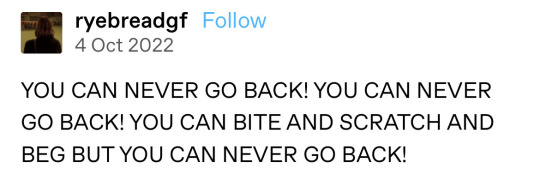

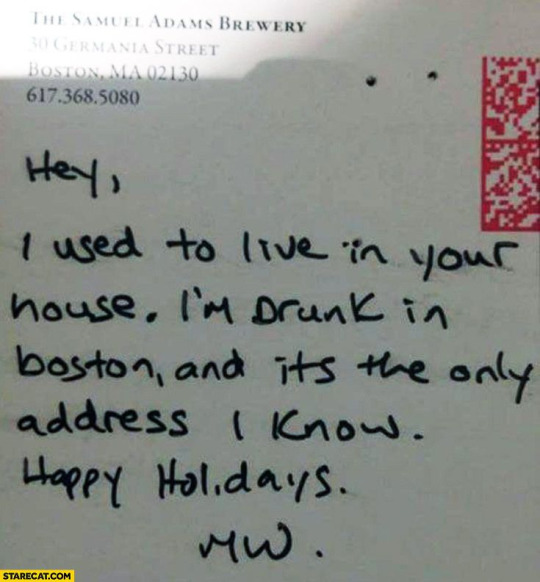
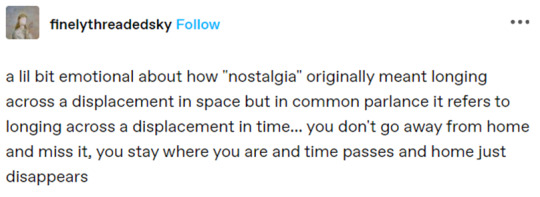
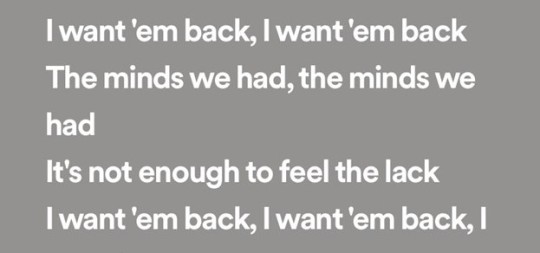
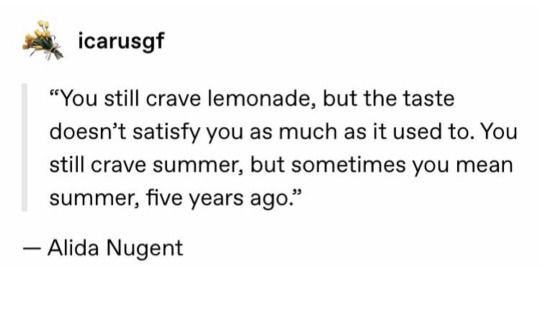

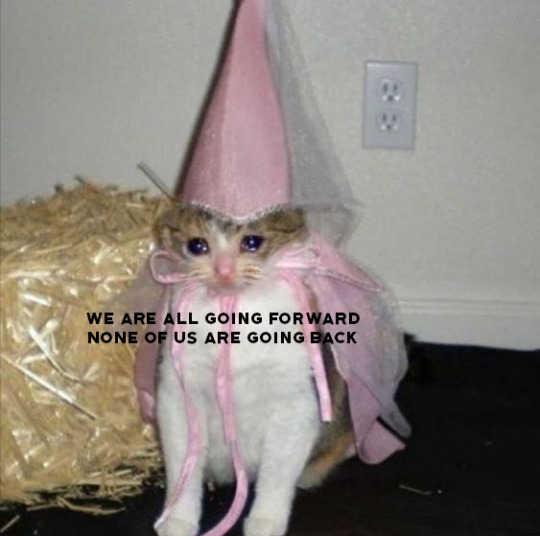


the ache of nostalgia
52K notes
·
View notes
Link
Check out this listing I just added to my Poshmark closet: Vintage Phantom of the Opera Music Box-The San Francisco Music Box Company 1986.
0 notes
Link
Check out this listing I just added to my Poshmark closet: Vintage The San Francisco Music Box Company “ Little Girl Playing Dress Up”.
0 notes
Video
youtube
ECP0720 Hotel Utah Open Mic 010603
Ear Candle Productions captured an open mic at the Hotel Utah Saloon in San Francisco, CA on January 6, 2003. Bob O'Magic was the MC. This tape begins with the calling out of performers by numbers (or in this case, "letters"), with Bob assisted by open mic performer Alabaster Adams.
If you can afford to donate any amount to Ear Candle Productions for these uploads, our company can then claim Revenue, Costs, and Administrative Expenses on our 2024 Schedule C and Schedule 1 Tax Returns.
You can pay by check and mail to our Post Office Box 170357, San Francisco, CA 94117 or you can make a direct deposit to Paypal at [email protected]. and we will be notified in our Wells Fargo Bank Account of your support for our work.
Davis is now retired.
The performers, in order:
1. The Kamikaze Mix with Keith Savage, Dougal Hayes (aka Rich Hubbard, Mike Toth, and others 2. Dennis 2 Society, accompanied by the same ensemble 3. Jeff Cole 4. Madge 5. Unidentified Harp-Guitarist 6. Bryan Harrison 7. JJ Schultz
Ear Candle Productions is a small music label, video production, and eLearning website designed to be a place for the arts to stay and to be a venue for the creative products of the owners, John Bassham (AKA J Neo Marvin) and Debra Nicholson Bassham (AKA Davis Jones). We live in San Francisco. Come visit our website, check out our YT, Bandcamp, Ear Candle Radio, and other pages at https://earcandleproductions.com
0 notes
Link
Check out this listing I just added to my Poshmark closet: 💜Vintage San Francisco Music Box Company Red & White Jester Mini Show Globe.
0 notes